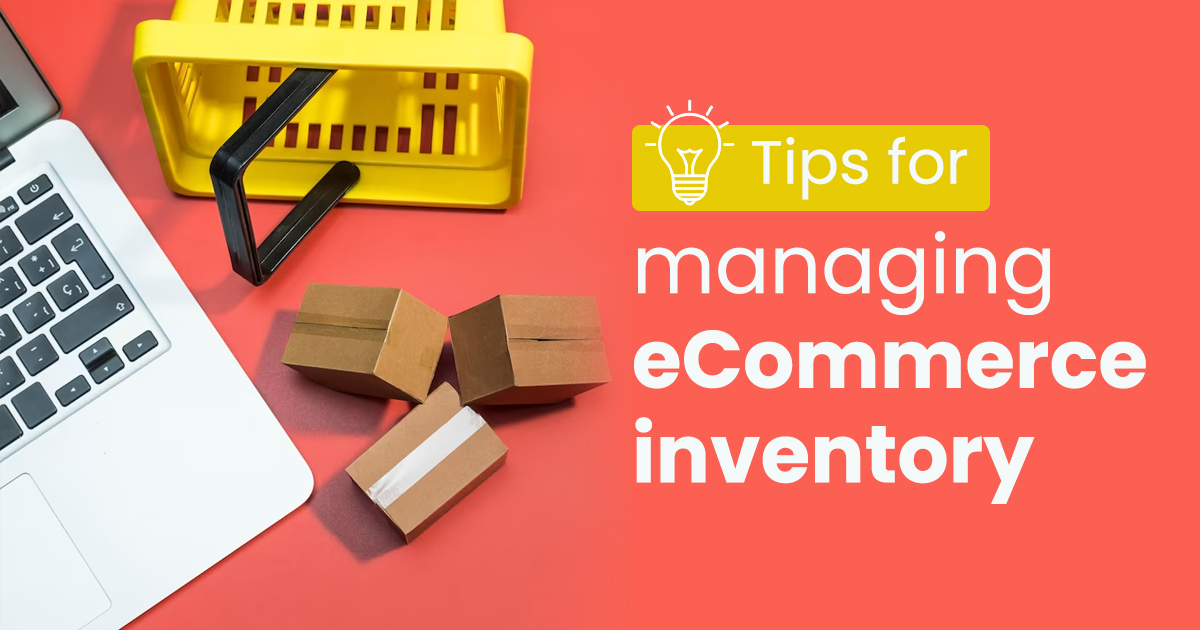Tips for managing eCommerce inventory

Managing eCommerce inventory is an essential part of running a successful online business. Without proper inventory management, businesses can run into a host of problems, including stockouts, overstocks, and inaccurate inventory levels. This article will discuss some tips for managing eCommerce inventory effectively.
1. Conduct Regular Inventory Audits
One of the most important steps in managing eCommerce inventory is conducting regular inventory audits. This involves physically counting all of your inventory to ensure that the numbers in your system match the physical quantities on hand. Regular audits can help you identify discrepancies and prevent inventory issues before they arise.
2. Use Inventory Management Software
Inventory management software can be a valuable tool for eCommerce businesses. It can help you track inventory levels, monitor sales trends, and automate reorder processes. This can save time and reduce the risk of stockouts or overstocks. There are many different inventory management software options available, so it’s important to find one that suits your business’s needs.
3. Set Reorder Points and Safety Stock Levels
Reorder points and safety stock levels are important metrics for managing eCommerce inventory. Reorder points indicate the minimum inventory level at which you should place a reorder to prevent stockouts. Safety stock levels represent the extra inventory you keep on hand to protect against unexpected spikes in demand or supplier delays. By setting these metrics, you can ensure that you always have enough inventory to fulfil customer orders.
4. Implement a First-In-First-Out (FIFO) System
A first-in-first-out (FIFO) system is a method of inventory management that ensures that the oldest inventory is sold first. This can help prevent inventory from becoming obsolete or expired and can improve inventory accuracy. By implementing a FIFO system, you can reduce the risk of waste and ensure that your inventory is always fresh and up-to-date.
5. Monitor Sales Trends and Seasonality
Sales trends and seasonality can have a significant impact on eCommerce inventory levels. By monitoring sales trends, you can identify which products are popular and adjust your inventory levels accordingly. Additionally, by considering seasonality, you can prepare for spikes in demand during holiday periods or other seasonal events.
6. Use Product Bundles and Kits
Product bundles and kits can be a useful strategy for managing eCommerce inventory. By bundling products together, you can sell more inventory at once and reduce the risk of overstocks or stockouts. Additionally, product bundles can provide customers with a more convenient and cost-effective way to purchase multiple items at once.
7. Consider Dropshipping
Dropshipping is a fulfillment model in which products are shipped directly from the supplier to the customer, without the need for the retailer to hold inventory. This can be a useful strategy for managing eCommerce inventory, as it can reduce the need for physical storage space and can provide a more flexible and cost-effective fulfilment option.
Conclusion
Managing eCommerce inventory is a critical component of running a successful online business. By conducting regular inventory audits, using inventory management software, setting reorder points and safety stock levels, implementing a FIFO system, monitoring sales trends and seasonality, using product bundles and kits, and considering dropshipping, eCommerce businesses can effectively manage their inventory levels and prevent inventory issues. By taking these steps, businesses can improve their efficiency, reduce costs, and provide exceptional customer service.
Want to build an online store that’s optimized for conversions?
Our team of eCommerce experts in Jaipur can help. We’ll create a website that’s visually appealing, easy to navigate, and designed to convert visitors into customers. Whether you’re just starting out or looking to upgrade your existing website, we’ve got you covered.
Subscribe to our Blog
Read our newly created blogs delivered straight to your inbox.


